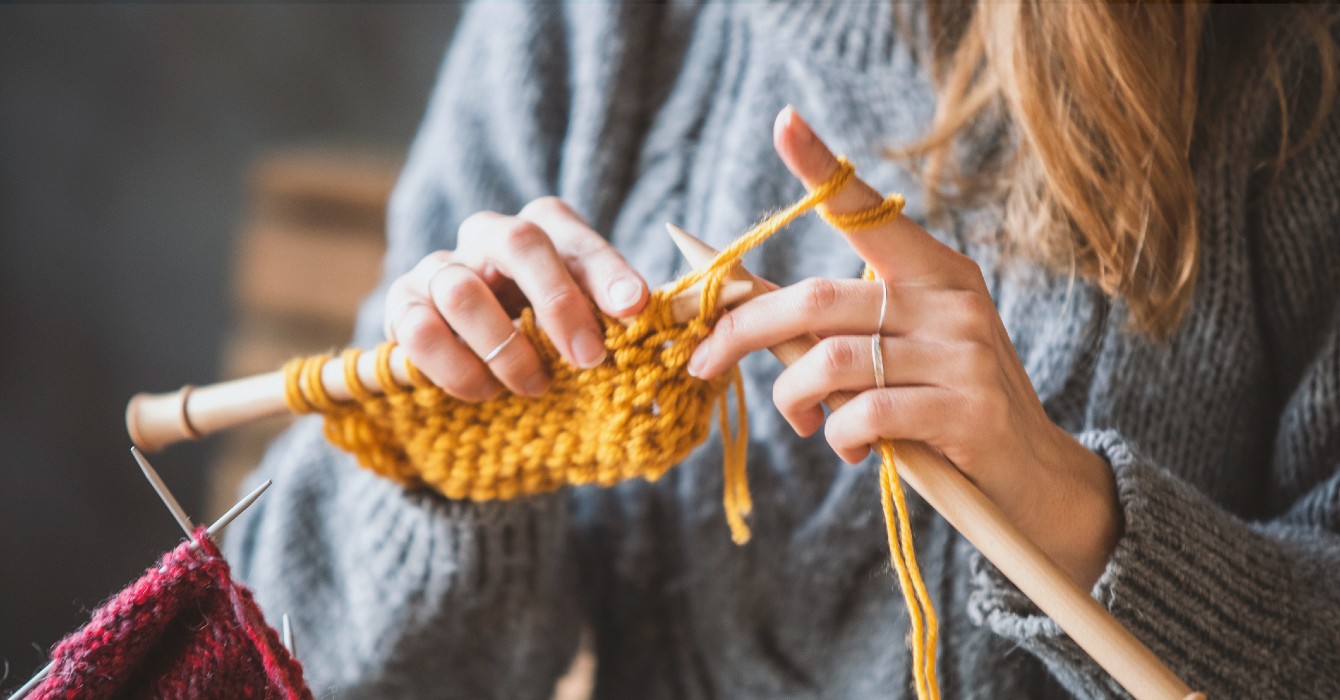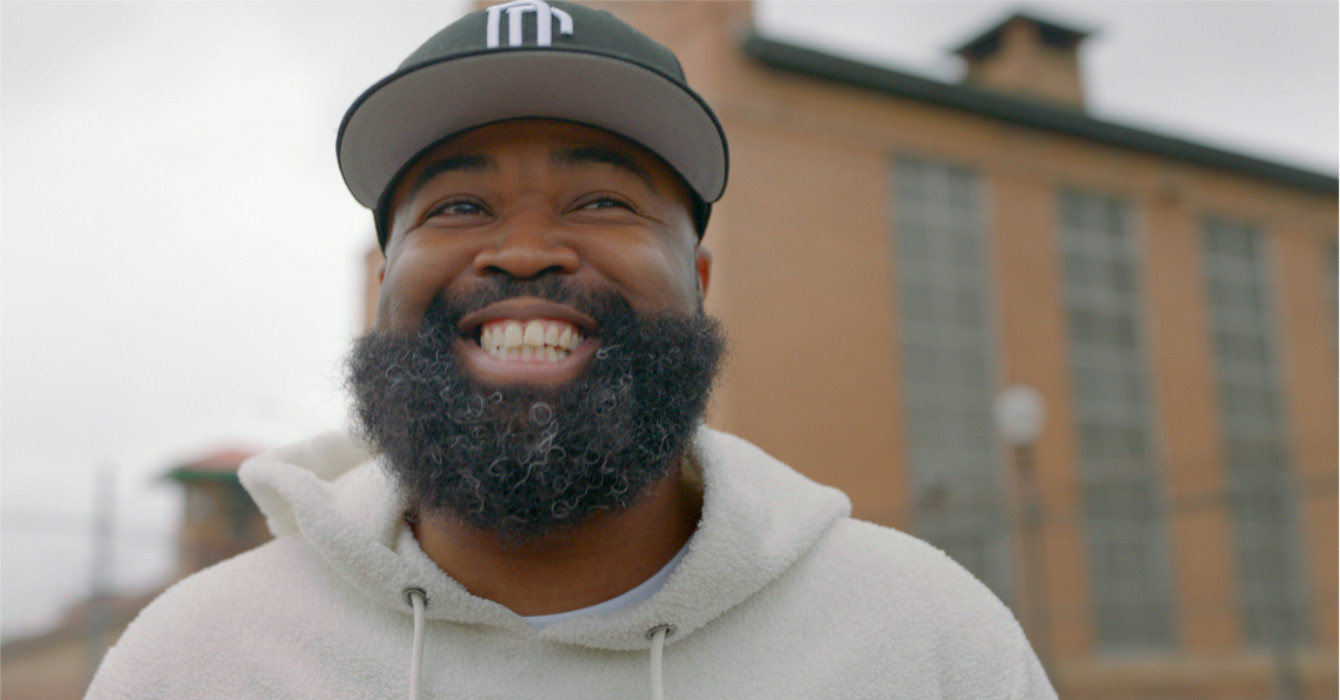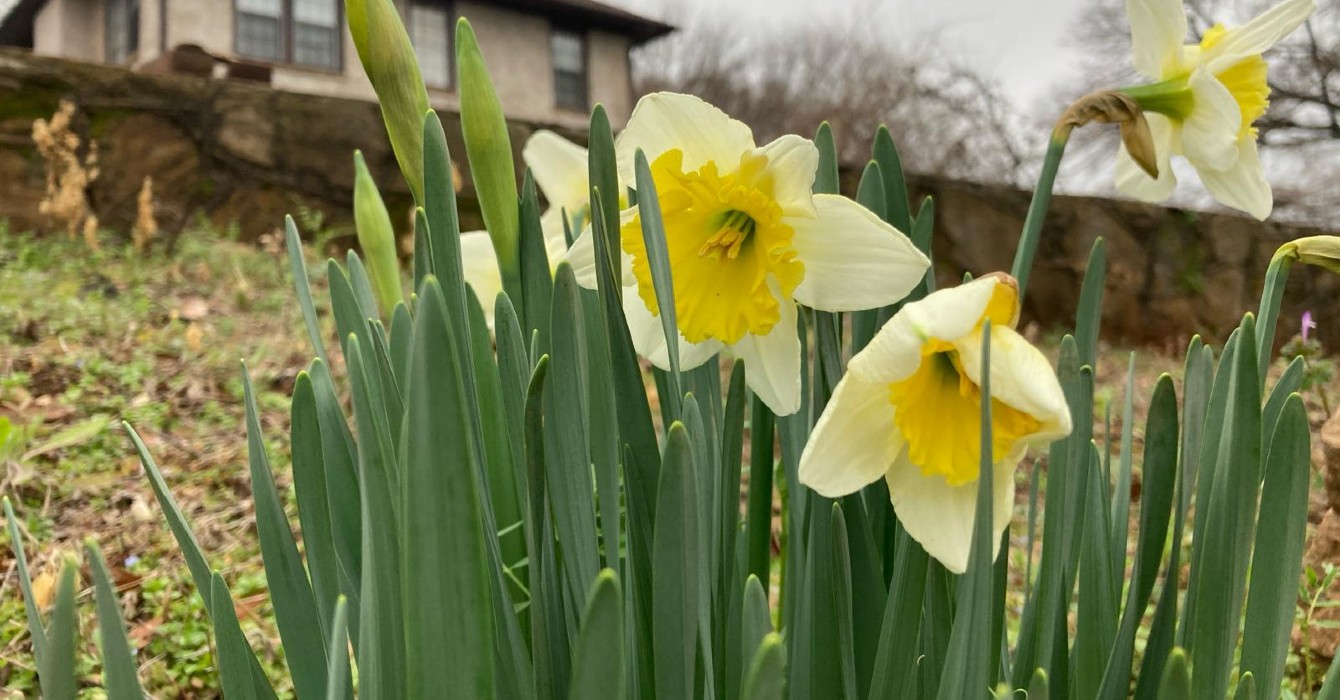Like many indigenous people in Canada, Leanne Betasamosake Simpson’s family was disconnected from the practices of their ancestors.
But as a young adult, Simpson, who is Michi Saagiig Nishnaabeg, an indigenous people with a homeland in what is now southern Ontario, returned to learn the language and traditions from the elders of her community.
Among those practices is a rich tradition of storytelling, which she describes as “deeply relational and emotional, spiritual, physical and intellectual, all at the same time.”
“We have this vast, vast body of oral stories,” Simpson said. “We also have our own personal stories and voice and articulation of our own experiences. People are asked to see themselves in the story, to carry the story, to work with the story and to find their own meaning within a story.”
Simpson takes these traditions and creates new work as a writer of fiction and poetry, a musician, songwriter and spoken-word performer, and a scholar (with a Ph.D. from the University of Manitoba).
She also is an activist for indigenous people in Canada, pursuing reforms that inevitably address environmental issues and the impact of climate change.
Simpson is the author of “Dancing on Our Turtle’s Back,” an exploration of Nishnaabeg traditions and culture, as well as “The Gift Is in the Making,” a fresh retelling of Nishnaabeg stories. Her project “Islands of Decolonial Love” includes both a book of short stories and an album of poetry and music.
Simpson spoke to Faith & Leadership while at Duke to deliver the 2019 Facing the Anthropocene Luce Lecture hosted by the Kenan Institute for Ethics. The following is an edited transcript.
Q: You are a fiction writer. You’re a musician. You’re a scholar. You write nonfiction as well. How does this multigenre approach influence the work that you do?
It’s based on Nishnaabeg storytelling practices -- living practices -- and so it doesn’t fit neatly into Western genres. That’s one of the reasons why it appears that I have so many different things going on. But I’m coming from a very different place.
I started in the academy.
There’s a rigidity to the academy that’s very difficult, especially for indigenous scholars, because so much of our knowledge is oral and on the land and with our elders and in our language and not in the library and not in written texts. So basing dissertations and research on what’s written about us is problematic.
In the academy, you’re always telling people and defending yourself, while in fiction, you’re showing and you’re creating these worlds. So while I do certainly talk about things like gender in the academy, I really also like to play with that in fiction and create worlds and create characters.
The performance aspect of my career came out of becoming a mother, actually. You can accomplish a lot by not living in your body and just living in your head. [But] the process of giving birth sort of awakened that embodied practice.
I really like being able to have a relationship with the audience. When you’re a writer and someone reads your book, you’re not there. When you’re a musician and you do your song or you’re in a performance, the audience is right there, and you know immediately what’s happening. It sort of became different tools for reaching different audiences in different ways.
Q: What is your tradition of storytelling?
Nishnaabeg life is very land-based -- things like hunting and fishing, collecting wild rice and processing it and making maple syrup. When you’re out in the bush in March collecting sap, there are lots of stories. The process of making the sap into sugar invokes those stories, and it also invokes theory, and it also invokes decision making and values and ethics. And so that practice embodies a lot of intellectual knowledge, and it invokes a lot of theoretical knowledge.
That practice of going through the year is something that is very, very rich and very, very generative. A lot of research and a lot of insights can be done in universities with the library and discussing with colleagues, but for indigenous people, land and water and language are really important sources -- deeply relational and emotional, spiritual, physical and intellectual, all at the same time.
Q: What’s the purpose and significance of the storytelling practices you are passing along to your children?
For me, storytelling is a way of connecting to the land, and it’s a way of connecting with the past, and it’s also a way of connecting to the future.
We have this vast, vast body of oral stories. We also have our own personal stories and voice and articulation of our own experiences. People are asked to see themselves in the story, to carry the story, to work with the story and to find their own meaning within a story.
Telling my children stories is like planting little seeds inside them or wrapping them in a blanket. What I hope as a parent is that I’ve given my kids this garden of stories and then when life brings them challenges, they will have this body of knowledge that will provide them with comfort.
Q: What is your ultimate aim in reaching your audience as an activist or as a storyteller or even as a scholar?
Initially, the audience I wanted to reach was my own people, and then other indigenous people, and then other people of color and communities that were struggling.
What I’m seeing now is this real urgency for everybody in many different cultures and in many different communities around the health of the land and the environment. It becomes a vehicle to start to build some solidarity and to start to think about what we need to do in terms of change and the world that we want to live in.
Q: Did you grow up in the kind of community that you write about?
Like a lot of indigenous people of my generation, it’s been a process of recovery. I grew up off-reserve with a Nishnaabeg mother and a white father, so I was separated from community.
In my early 20s, I spent some time in a northern Nishnaabeg community with about 30 elders, and that was a turning point in my life. I really fell in love with my culture and my language and the way of life that they were living. I really wanted to learn to think and be in the same sort of world that they were living in. So it’s been a process of recovery.
Q: Is this a living language in a community, or are you reaching back to something that has been cut off by the twists and turns of history?
I’m a language learner; I’m not a fluent speaker.
It’s very much a living language. Nishnaabeg is still spoken in our communities. There are lots of fluent speakers.
Not all indigenous languages in Canada are in as good a shape as Nishnaabeg, and there’s lots and lots and lots of work to be done in terms of making sure that this next generation is producing fluent speakers. It’s something that is really important to me and to my community.
Q: What are your spiritual practices? Is your family Christian?
I was raised, as were my mother and my grandmother, in the United Church of Canada. Missionaries were the prime colonizers in our part of the territories. They were responsible for the residential schools and the day schools, and so it’s quite a difficult relationship that my family has with the church.
I left that as a teenager and [now] follow the Nishnaabeg way. My family is Nishnaabeg, and we follow our own Nishnaabeg spirituality and participate in ceremonies and live that way of life.
Q: Were your relatives in these residential schools?
The history is slightly different in my community. We were initially in a Methodist mission that became the reserve. That was the site of the first residential school in Canada, but because we were right there, the kids went to a day school.
Then tuberculosis went through the reserve, and that’s where the disconnection really took place in my family. My great-grandmother was in a sanitarium, and then my grandmother went into a child welfare situation.
It’s been my generation that’s been the first to move back into the territory and reconnect -- my sisters and I.
Q: Was your generation cut off from the older generations, or are there older generations there that you can learn from?
We have wonderful elders that are supporting us and helping us and teaching us. I feel like the real hope lies in my kids and that generation.
My generation in Canada is the first generation that wasn’t in residential school, but we are still sort of recovering from it because of our parents. But this next generation is exciting because they’ve grown up in a way that’s been very culturally nurturing for a lot of them.
We still have lots of issues and problems, but I’m excited for my kids in that way.
Q: Has climate change affected your life?
Our elders have been talking about climate change for decades now. Just in terms of the production of maple syrup and maple sugar, we’re seeing that shift north. Our winters are getting warmer and warmer each year.
I also work in the north and the Northwest Territories -- Dené territory -- and there are lots of impacts there in terms of melting of permafrost and different species migrating north. People who are close to the land, whether they’re indigenous hunters or organic farmers, are definitely seeing these impacts in their own lives.
Q: What would you say to folks who feel overwhelmed or discouraged about climate change?
Indigenous people in North America have been through some horrific events in the past, and I take a lot of strength from what my ancestors have survived. In some ways, it’s a miracle that I even exist. The struggle is long.
Every time I connect with the natural world -- whether it’s seeing the moon or sitting by an ocean or swimming in a lake -- I feel a connection to something bigger.
Creation is just a fantastic gift, and I think that we can’t afford to get bogged down or disillusioned or feel hopeless, because of the magnificence of the earth.
Q: What gives you hope?
I have the privilege of traveling to a lot of different communities, and I see a lot of small-scale people getting together and solving problems in a good way with what they have. That gives me a lot of hope.
I don’t spend a lot of time looking for hope, because I think even if there is no hope, we still have to do the work. There’s a struggle ahead of us to get this under control. I don’t think it’s going to be easy, and I don’t think it’s going to be rosy. But I think that’s the work that we have to do for our grandchildren.
Q: You have talked about the “settler-colonizer mentality.” If I understand you correctly, this refers to a damaging, consumerist way of being. Is the alternative a return to an earlier lifestyle?
The earth -- the state of things, the state of the environment -- is telling us that we can’t live this way, which is what indigenous people have been saying for centuries.
I don’t think it’s a going back. I think it’s bringing those ethics and those practices forward and figuring out, given the reality of 2019, how do we work together and how do we live differently, how do we organize things differently, not based on exploitation and extractivism and a violence toward indigenous and black people.
That vision is collective work, and I think starting to build it, starting to build the alternatives on the ground right now, is something that will generate more answers.
Q: Who are some of the thinkers or activists you would recommend for people to find out more about?
Black Lives Matter has been doing a lot of work in and around Toronto, so they’re a group that I’m definitely learning from. The White Earth Land Recovery Project, and Winona LaDuke, has been doing some great work in Minnesota for decades now -- really leading the way ere.
The Dakota Access Pipeline mobilization -- there’s a lot of learning there and in the community that they’ve built around that. In every community, there are these spaces where people are thinking seriously and acting and building these alternative structures.












